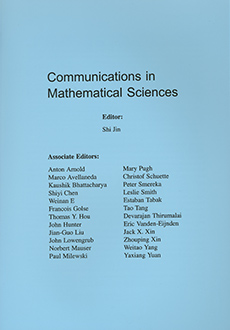Abstract
We extend previous work and present a general approach for solving partial differential equations in complex, stationary, or moving geometries with Dirichlet, Neumann, and Robin boundary conditions. Using an implicit representation of the geometry through an auxilliary phase field function, which replaces the sharp boundary of the domain with a diffuse layer (e.g. diffuse domain), the equation is reformulated on a larger regular domain. The resulting partial differential equation is of the same order as the original equation, with additional lower order terms to approximate the boundary conditions. The reformulated equation can be solved by standard numerical techniques. We use the method of matched asymptotic expansions to show that solutions of the reformulated equations converge to those of the original equations. We provide numerical simulations which confim this analysis. We also present applications of the method to growing domains and complex three-dimensional structures and we discuss applications to cell biology and heteroepitaxy.
Citation
X. Li. J. Lowengrub. A. Ratz. A. Voigt. "Solving pdes in complex geometries." Commun. Math. Sci. 7 (1) 81 - 107, March 2009.
Information





